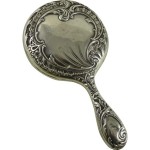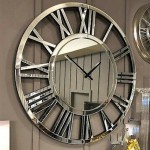Antique Desk With Mirror: A Timeless Fusion of Function and Elegance
Antique desks with mirrors, often referred to as dressing tables or vanities, represent a captivating blend of practical workspace and personal grooming station. These pieces, typically dating from the 18th, 19th, and early 20th centuries, offer a glimpse into past eras, showcasing the craftsmanship, aesthetics, and social conventions of their time. Their enduring appeal lies not only in their historical significance but also in their inherent beauty and functional versatility.
The integration of a mirror into a desk design was a strategic decision, reflecting the growing importance of personal presentation, particularly among women, during the periods of their widespread production. It allowed individuals to seamlessly transition between writing, correspondence, and cosmetic upkeep within a single, dedicated space. This harmonious combination speaks to a time when domestic life and social engagements were intricately interwoven.
The value and desirability of an antique desk with a mirror are determined by several factors, including its age, provenance, condition, materials, and craftsmanship. Rare examples, particularly those associated with well-known furniture makers or possessing documented historical significance, command higher prices. The presence of original features, such as hardware, upholstery, and finish, also contributes significantly to its value.
Understanding the Historical Context
The development of the antique desk with a mirror is closely tied to the evolution of furniture design and social customs. During the 18th century, the Rococo and Neoclassical styles greatly influenced furniture aesthetics. Rococo desks with mirrors often featured elaborate carvings, serpentine shapes, and ornate gilt accents. Neoclassical examples, conversely, emphasized symmetry, clean lines, and restrained ornamentation, often incorporating motifs inspired by ancient Greece and Rome. Mahogany, walnut, and satinwood were commonly used during this period.
The 19th century saw the rise of various styles, including the Victorian era, which favored rich ornamentation, dark woods like rosewood, and the use of plush fabrics for upholstery. Desks with mirrors from this period frequently incorporated intricate marquetry, inlays, and carvings, often depicting floral or figural motifs. The Aesthetic Movement, which emerged in the late 19th century, emphasized beauty and craftsmanship, leading to the creation of desks with mirrors that showcased natural materials and handcrafted details.
The early 20th century witnessed the influence of Art Nouveau and Art Deco styles. Art Nouveau desks with mirrors often featured flowing lines, organic forms, and the use of exotic woods. Art Deco examples, in contrast, embraced geometric shapes, streamlined designs, and the use of luxurious materials like chrome and lacquer. The availability of mass-produced furniture also increased during this time, leading to a wider range of styles and price points.
Key Features and Distinguishing Characteristics
An antique desk with a mirror typically consists of a writing surface, drawers or compartments for storage, and a mirror or mirrors attached to the desk or standing separately on top. The mirror itself can be fixed, adjustable, or incorporated into a hinged panel. The design and placement of the mirror often reflect the stylistic trends of the period. For example, a Georgian dressing table might feature a small, oval mirror in a tilting frame, while a Victorian vanity might have a larger, more elaborate mirror surrounded by decorative carving.
The materials used in the construction of these desks vary depending on the period and the maker. Hardwoods like mahogany, walnut, oak, and maple were commonly used for the frames and structural components. Veneers of exotic woods, such as rosewood, satinwood, and ebony, were often applied to the surfaces to enhance their appearance. The hardware, including drawer pulls, escutcheons, and hinges, can provide valuable clues about the age and origin of the desk. Original hardware is highly desirable and can significantly increase its value.
The craftsmanship evident in the construction of an antique desk with a mirror is another important factor to consider. Hand-carved details, intricate joinery, and expertly applied finishes are hallmarks of high-quality furniture. The presence of maker's marks, labels, or inscriptions can also help to identify the maker and authenticate the piece. Examining the desk closely for signs of wear, damage, or repairs is essential to assess its overall condition and potential value.
Furthermore, the style of the mirror and its placement on the desk is a significant stylistic element. Some desks feature pivoting mirrors, attached via decorative posts allowing the user to adjust the angle. Other designs incorporate fixed mirrors, often elaborately framed and integrated into the overall structure of the desk. The shape of the mirror, ranging from simple ovals or rectangles to more ornate shapes with curved or scalloped edges, speaks to the design sensibilities of the era.
Preservation and Restoration Considerations
The preservation of an antique desk with a mirror requires careful attention to its environment and handling. Sudden changes in temperature and humidity can cause damage to the wood and finish. It is advisable to keep the desk away from direct sunlight, heat sources, and excessive moisture. Regular dusting with a soft cloth can help to prevent the buildup of dirt and grime. Avoid using harsh chemicals or abrasive cleaners, which can damage the finish.
When considering restoration, it is important to approach the process with caution. Over-restoration can diminish the value and authenticity of the antique. The goal should be to preserve the original character of the piece while addressing any structural or cosmetic issues. Minor repairs, such as tightening loose joints or touching up the finish, can be undertaken by experienced furniture restorers. More extensive restoration work should be entrusted to specialists who are familiar with antique furniture and conservation techniques.
Replacing missing or damaged hardware can be a delicate process. Try to find replacement hardware that is as close as possible to the original in terms of style, material, and finish. Antique hardware dealers can often provide suitable replacements. Avoid using modern hardware, which can detract from the overall aesthetic of the desk. When refinishing an antique desk, it is important to use appropriate finishing materials and techniques. Stripping the original finish can remove valuable historical evidence and reduce the value of the piece. Consider preserving the original finish whenever possible, even if it shows signs of wear and age.
Ultimately, the care and maintenance of an antique desk with a mirror should be guided by a desire to preserve its historical integrity and ensure its longevity. Proper handling, environmental control, and judicious restoration can help to maintain its beauty and value for generations to come. Consulting with reputable antique furniture conservators or appraisers can provide invaluable guidance on the best practices for preservation and restoration. These experts can offer insights into the desk's history, construction, and potential value, helping owners make informed decisions about its care.
Choosing to invest in an antique desk with a mirror is more than just acquiring a piece of furniture; it's embracing a tangible link to the past. These pieces not only offer functional workspace and reflection but also embody the artistry, craftsmanship, and social narratives of bygone eras, offering daily reminders of history and enduring beauty.

Antique Makeup Vanity Dresser Mirror Vanities Gorgeous Furniture Victorian

1910s Antique English Sheraton Mahogany Inlaid Vanity Desk Mirror

1930s Rococo Style Vanity With Etched And Shaped Triple Mirror Vintage Furniture Design Shabby Painting Tutorial

Antique Secretary Desk Mirror Quarter Sawed Oak Locking Door Key Bottom Shelf

Antique Makeup Vanity Dresser Mirror Table Vanities Antiques

Antique Burl Walnut 6 Drawer Vanity With Mirror At Furniture Us House Design

Antique Secretary Desk Mirror Quarter Sawed Oak Locking Door Finland

Sold Vintage Antique Grey Vanity Desk With Mirror Chalk Painted Rustic Glass Knobs Distressed Furniture Makeover Diy Renovation

Antique Victorian Art Deco Vanity Dressing Table Desk Mirror Walnut Wood Carved

Victorian Dressing Table Teak Adjustable Mirror Yola Gray Antiques Interiors








